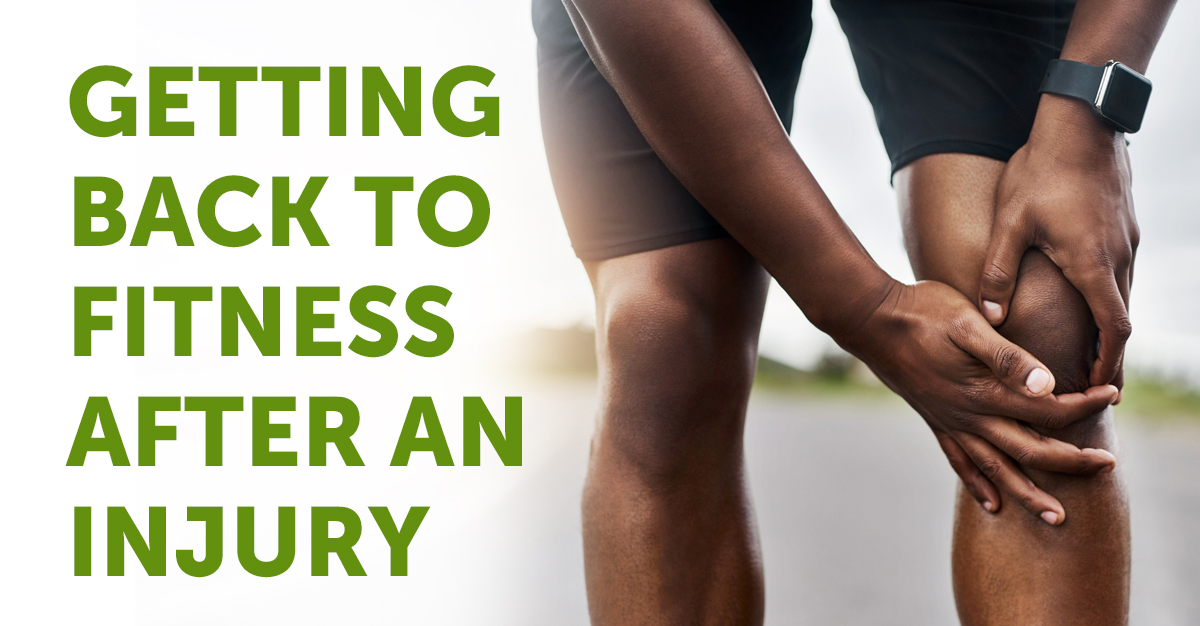
If you’re taking part in a sport and training regularly to hit peak performance, you’ll understand the impact an injury can have. Lost training days, empty pages on the diary, targets to revise and thoughts going around your head – what do I do now? The number one rule is don’t try to carry on. You could make the injury worse. Even if you feel okay, there’s a good chance you’ll pick up an injury somewhere else because you’re moving unnaturally by trying to protect the injured area.
The first step with minor injuries like muscle pulls or sprains is to get some ice on the injured area. That helps increase blood flow and starts removing waste from the injury. If your injury is more serious, get to a doctor or physical therapist for an assessment.
Healthcare professionals now recognize the health benefits of exercise and take a more positive attitude to injuries sustained through sport — that wasn’t always the case. But, qualified physical therapists specialize in sports injuries so you can be confident of expert advice, and a sympathetic ear.
Getting Back To Fitness After Injury
Look ahead
When you know the extent of your injury, it’s time to start looking ahead with a positive mindset. Forget the initial disappointment and frustration. Recovery programs are based on progressive exercise, not weeks or months of non-activity. Work out how you’re going to get your regular training and fitness routines back on track. Investing in a fitness tracker could help motivate you and keep track of your progress.
Top tip: Avoid the cookie jar. You know that old cliché ‘no pain, no gain’, now think ‘no train, weight gain.’
Start slowly
You’ve got the good news; your injury can be treated. You can’t wait to get back but don’t be tempted to rush recovery. If your physical therapist prescribes a course of treatment or exercises, stick to it and complete the course. You might think you’ve recovered and can get back to your normal training levels. Just ask around – hands up, who had to go back to physical therapy again?
Any exercise in your recovery period must start easy— and be progressive. So, easy jogging maybe, light stretches and simple exercises to flex and strengthen the injured area. If you’re running, the grass is easier on the legs than the road and the uneven surface can actually strengthen joints by making them work harder.
An alternative approach is to exercise in a different way. Swimming and cycling, for example, don’t affect the weight-bearing joints and muscles like running. But you’re still getting a good cardio workout. Whatever you do, make sure you can handle the work without strain. The same goes for the physical therapist’s exercise routines. Follow the instructions carefully.
Plan your return
Now you’re in recovery mode, you can start thinking about a return to normal levels. Put some realistic dates in your diary — can I make the big game, that local competition, or one of my favorite races? Targets for recovery are just as motivating as targets for competition. But, don’t be ruled by them, your recovery could take longer. Complete recovery comes first.
It’s also important to think about the injury. What caused it? Was it poor form, excessive training with no time for recovery between sessions, worn-out shoes if you’re a runner, or just an unfortunate accident?
Understanding the cause of the injury can help you plan your sessions when you eventually return to fitness. Think about reducing the duration or intensity of your training sessions, to begin with. Then plan a sensible, progressive build-up.
Follow hard days with easy days if you train every day and include one day of complete rest or different types of exercise every week. Make sure you build recovery into your program — overuse is a major cause of injuries.
Improve all-round fitness
If you haven’t included alternative exercises in your training programs before, think about it now. Most sportspeople focus on the muscle groups specific to their sport and ignore the rest. That can lead to an imbalance in the body and could be an underlying cause if you suffer frequent injuries.
Ask your physical therapist for advice. They will almost certainly recommend exercises to strengthen the core, plus some fitness routines to strengthen antagonistic muscle groups. Better all-round fitness can put you in great shape for improved performance when you return.
Recovering from non-sports injuries
While much of the focus of exercise-based recovery has been on sports injuries, recent research at Columbia University’s Zuckerman Institute has highlighted the potential importance of exercise for patients recovering from a stroke or serious brain injuries. It is said that exercise and physical therapy is just as important for these patients as speech therapy.
Experiments with mice indicated that mice given a complete rest were slower to return to normal functions than mice that re-engaged earlier with an activity like using whiskers for detection. Looking at the potential for people, the researchers believe that introducing simple exercise tasks earlier can stimulate and re-activate important areas of the brain and promote faster recovery.
Consider booking an online physical therapy appointment
Although we strongly recommend consulting a physical therapist, COVID-19 has made it difficult for them to offer normal assessment and treatment services in person. Fortunately, we work with some fantastic physical and occupational therapists who provide a range of assessments, recovery programs and can help you get back to your routine fitness after injury.
To find out more, contact our friendly team. Here you can learn about an injury, how physical therapy can treat it, and find a physical therapy clinic in your area.
